
As a kid, Eric Robles loved to draw, but he had no idea a career in animation was even remotely possible. His Mexican father and Salvadorian mother came to the US in the ’70s. Robles and his sisters were raised in gang-affiliated neighborhoods of Los Angeles. Role models were few and far between. “We didn’t have much, but we were a happy family… we had each other,” he says.
“A lot of these neighborhoods were pretty tough to grow up in because of all the drive-bys and killings going on in the late ’80s and early ’90s,” he says. Eager to get their children away from the gang environment, his parents used friends’ addresses to get them into better schools in Burbank where Robles continued to draw.
After graduating from high school at 17, Robles expressed a wish to go to art school, but there was no way his parents could afford it. Instead he enrolled at Glendale Community College to study law enforcement. It was the instructor of his Evidence class, a Burbank police officer named Joe Dean, who took notice of the cartoon characters Robles was drawing on the back of his test papers.
-
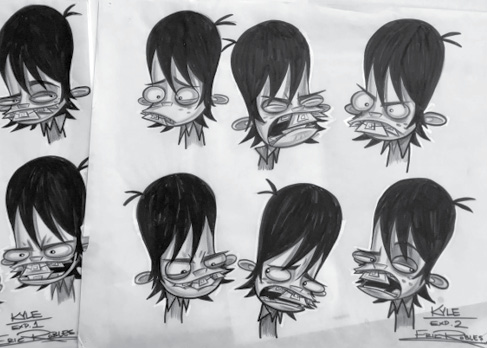
Sketches of Kyle Fanboy. -
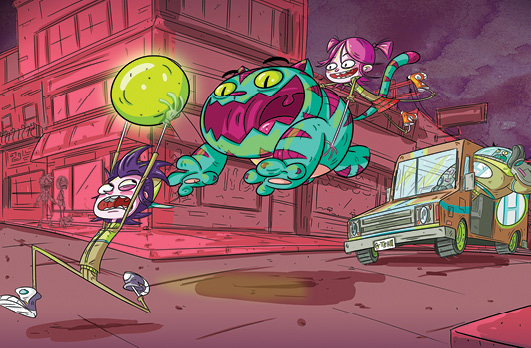
Action packed image from Glitch Techs.
One day he pulled Robles aside and asked, “What are you doing in my class?” Robles said, “Oh, I’m sorry Officer Dean, I won’t draw on your tests anymore.” But Dean told Robles he should be pursuing a career as an artist. As it turned out, Dean’s sister-in-law was Stephanie Graziano of Graz Studios. Dean told Robles to fill a sketchbook so he’d have something to show Graziano. Robles stayed up for three nights and delivered a sketchbook full of artwork to Dean. Soon an invitation to tour Graz Studios followed and he met the producers of the original X-Men series, The Tick, and others.
Seeing his enthusiasm, a Graz Studios executive set Robles up to meet with a producer at another animation studio. The 19-year-old watched as the producer flipped through his sketchbook. When he was done, the producer pointed to the bullpen outside his office and said, “You see those artists? Unfortunately, you will never be one of these guys.” He advised Robles to finish his law enforcement studies. Robles politely thanked him but instead of giving in to crushing disappointment, he was filled with determination. “It was a defining moment in my life,” Robles recalls. “I thought, ‘F- this guy! He does not know me…’ I refuse to let one person tell me that I’m not good enough.”
An internship opened up at Graz Studios and Robles took every opportunity to learn. At night, he studied the studio artwork he Xeroxed and brought home, barely sleeping before heading back to the studio where he left copies of his own drawings on producers’ desks, looking for feedback. One day a character designer quit and the director could not find his phone book because it was under a pile of Robles’ drawings. After taking a closer look at the artwork, he called Robles into his office and offered him a job designing.
For Robles this was life-changing. He remembers telling his parents that he would be paid $20 an hour. They were stunned—this was in 1995 and it was more than their combined hourly pay. With money Robles saved over the next few years, he and his parents were able to buy their first house together.
Through his twenties he worked at DreamWorks, Cartoon Network, and Disney. When the industry experienced a slump in the late ‘90s, he designed animatronics for a Universal theme park ride and creatures for movies. He worked for BKN, an international company, that sent him to Paris and London to pitch ideas for the company to develop. Eventually, he realized it was time to start pitching his own ideas. He quit his job and dedicated time to developing original ideas. Cartoon Network optioned his first idea, which spent a year in development but ended up being swept out when new management came aboard.
-
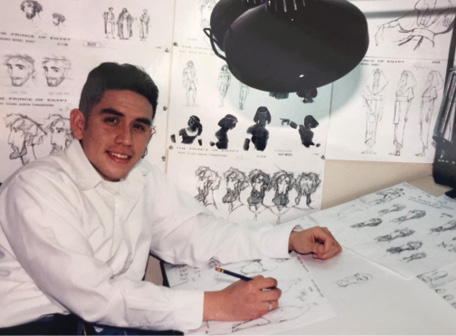
Working on DreamWorks’ Prince of Egypt. -
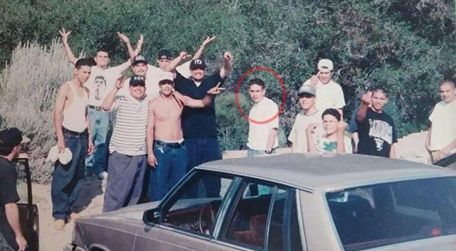
Robles (circled) growing up in L.A.
Robles moved to Nickelodeon where he worked on The X’s and was given an opportunity to pitch a short to Fred Seibert. He drew from his childhood experiences to develop Fanboy & Chum Chum, which turned into a series. The show ran for two seasons and won five Emmys. Nickelodeon wanted Robles to stay on and offered him an overall deal.
When he was working late one night then studio president Russell Hicks popped into his office and showed interest in the box of ideas Robles kept on his desk. Hicks randomly pulled out one about kids who work at a video game company to exterminate glitches that escape from faulty game consoles. “A kind of Ghostbusters with video games,” Robles says. Hicks loved the concept and put it into development. Robles partnered with Dan Milano, who became his co-creator on Glitch Techs, now in its second season on Netflix. Robles says that although it’s often noted how ethnically diverse the cast of Glitch Techs is, he wasn’t actually thinking about diversity when creating the show. It simply reflected the Los Angeles neighborhood he grew up in.
Reflecting on a career that has spanned 25 years, Robles is quite certain that if a teacher hadn’t asked about his portfolio, his life would have gone in a different direction. “It took just one person to believe in me and to give me that one opportunity,” he says. He likes to go to schools and talk to kids in communities that lack resources and positive messages about following passions and pursuing dreams. “So they know that if you can dream it, you can get paid for it—if you love it, it can be a career for you.”
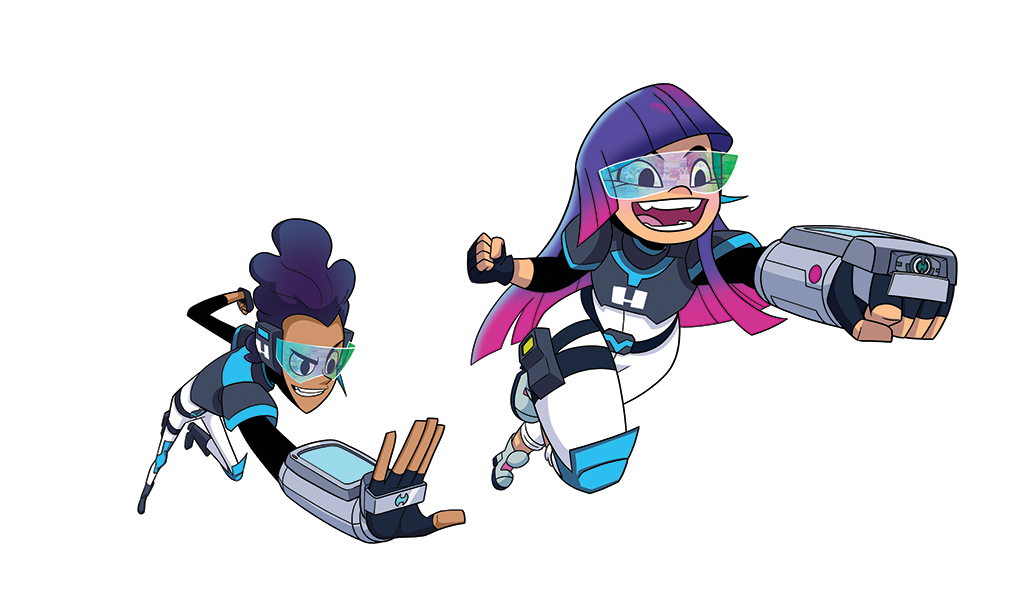
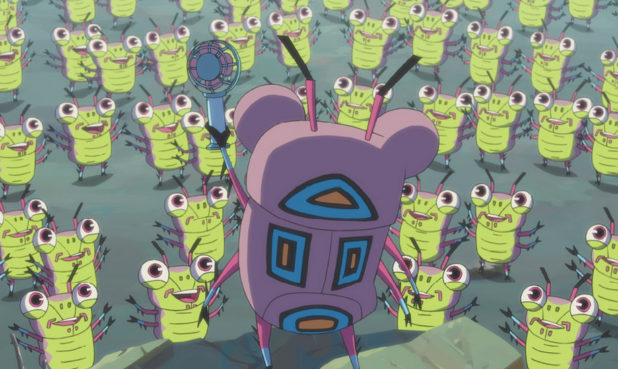
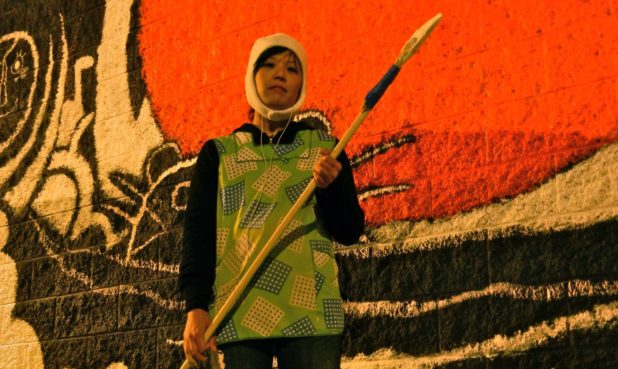
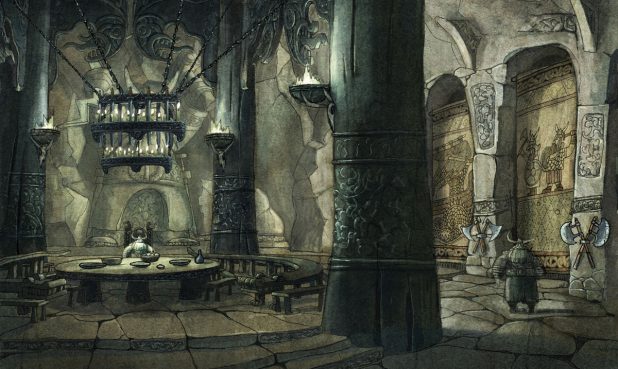
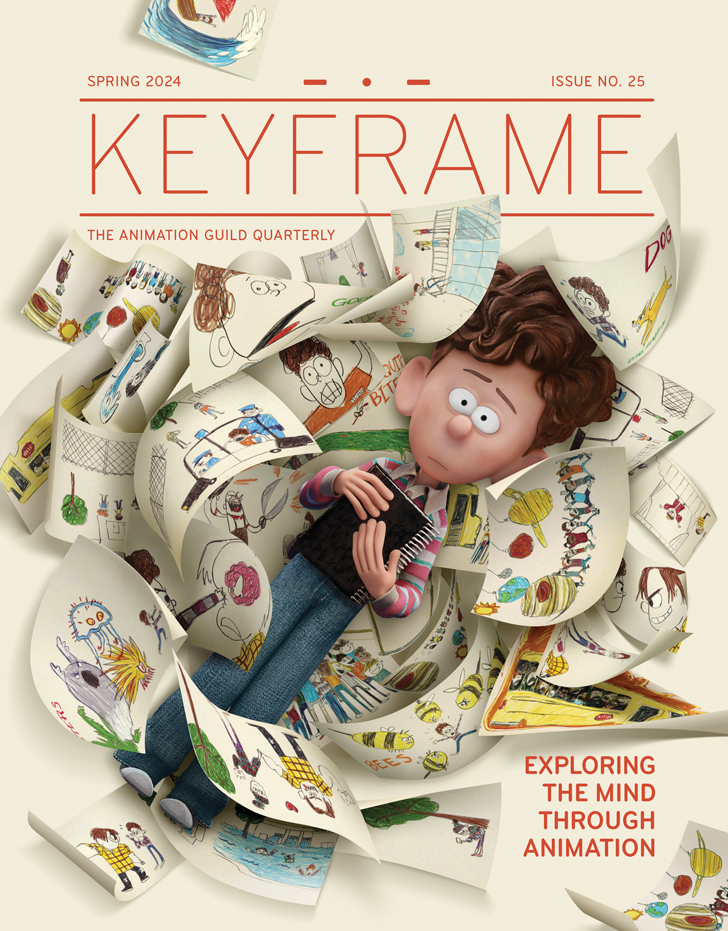

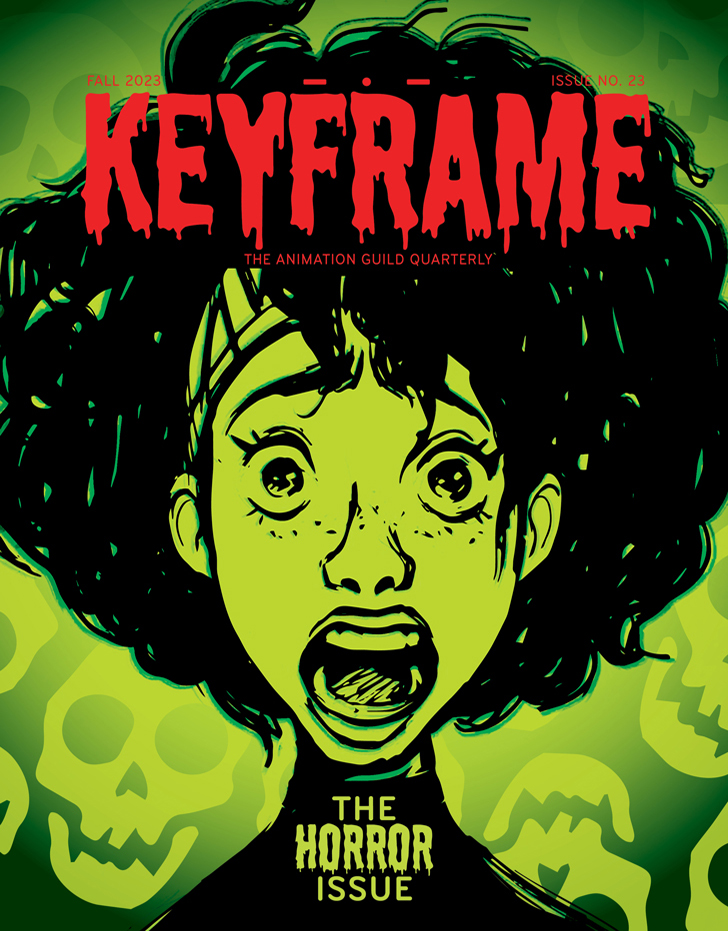
.png)